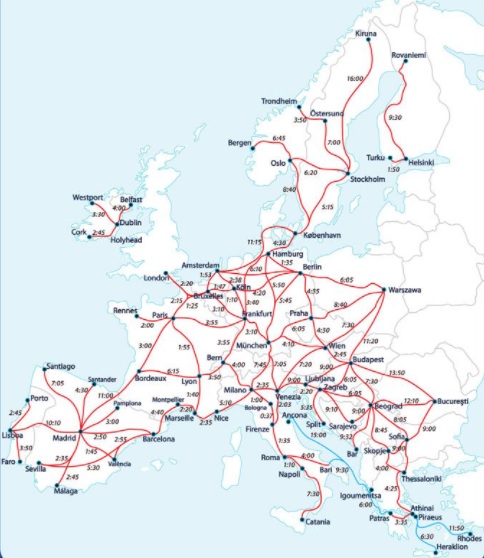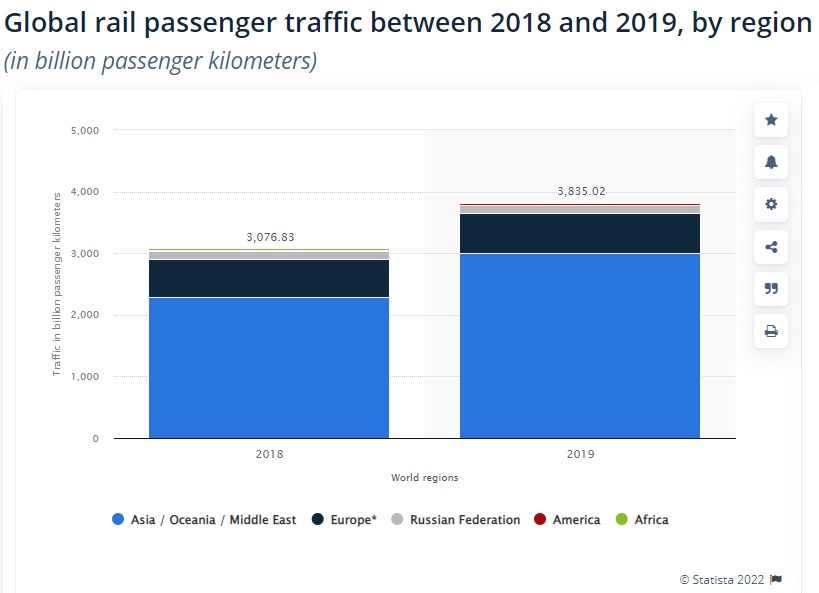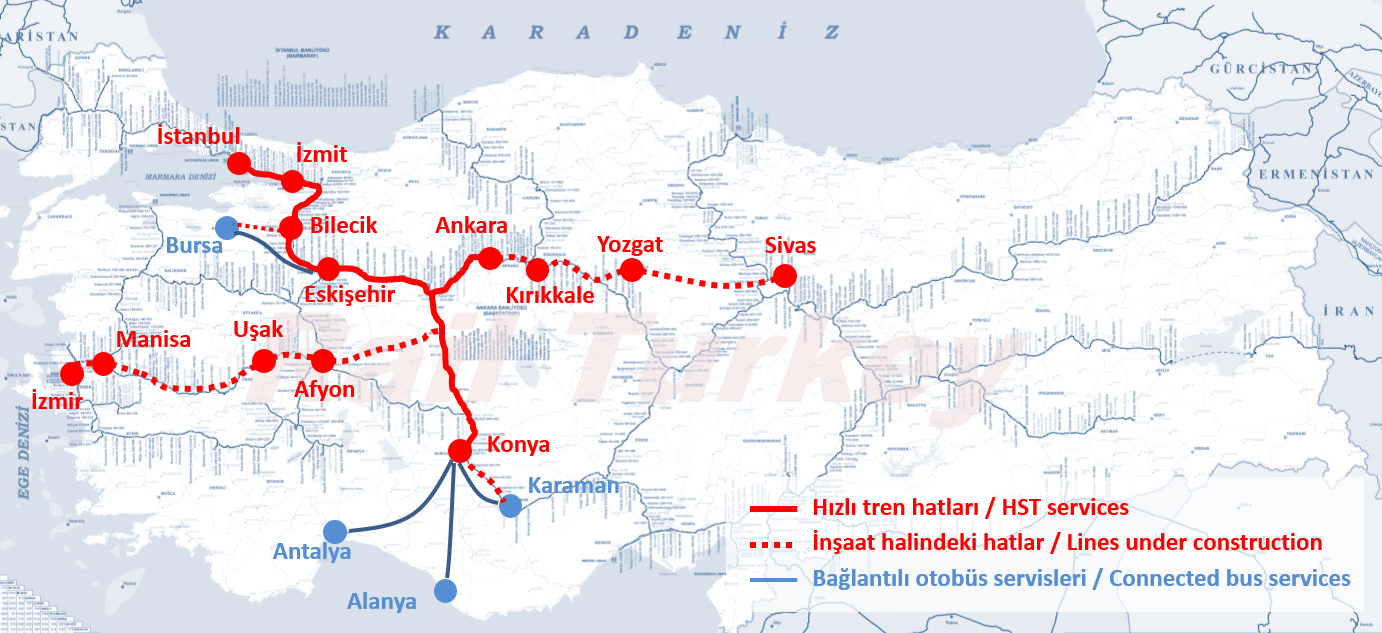We are about to fill our second year in which we continue to experience the effects of the pandemic. In many areas of our lives, there have been (and continue to be) changes that we would not have thought possible before. Regardless, there are some industries that will never stop and somehow move on or have to. Transportation is one of them. In fact, the direction in which our travel habits will progress already started to shape. Less travel, less hustle, more individual and remote work, easier and more environmentally friendly transportation alternatives and more aware decisions.
Before the pandemic, aviation was already working to be more environmentally friendly. But the last 2 years have come as a shock. While plans for a smoother transition were made, almost a third of the existing fleets became idle. They don’t appear to be reusable either. There are various reasons for this, but perhaps the most important of them is the railways (and trains) that are gaining momentum again.
Undoubtedly, trains have been in our lives much longer than airplanes. It is gradually regaining its passenger potential, which aviation has embraced to a great extent due to its quality and speed.
Whatever transportation alternative we choose, our travels have important common features such as travel fee, transportation to main terminal, security checks, registration/check-in, travel time, transfer and connection (if any), baggage claim, and journey from arrival terminal.
The pandemic had a negative impact on many of these steps in air transportation. The number of passengers and thus flights dramatically decreased, ticket prices increased, transportation capacities to the terminal decreased, the use of taxis or private vehicles (indirect cost) increased, security controls became longer, test/vaccine requirements enforced, the convenience of transfers is broken, the questioning of flight emissions and environmental awareness increased. Flying isn’t as cool as it used to be due to all these concerns.
On the other hand, the railways did not change their current habits much. Trains arrive and leave from city centers, well connected to public (cheap) transport in most cases. No dedicated time or procedure is needed for baggage while having more limit. Seats provide more space, more leg room, bigger desks or tables to work. There is usually a dining car which serves plenty of food in reasonable price. Freedom of walk, full flat sleeping and full windows are standard. Journeys are less noisy and shaky thanks to smoother tracks and improved suspension systems. Capacity is easily adjustable by changing the number of the cars on train sets. They are technically more reliable and on-time while exposing less risk of cancellation or delay in the events of heavy snow, fog, storm, volcanic ash, or icing. As such, many people began to prefer trains to airplanes.

Inside the first-class French TGV cabin. (Photo by Benjamin Ramm)

High-speed train main station, Ankara/Turkey.
Along with all these advantages, there are also disadvantages. Especially in international trains, the quality of the departure and arrival terminals can be very different from each other. Train changes and transfers are not as easy to understand and passenger-friendly as airports. With cross-platform transitions, stairs and varying routing standards in different countries, language issues are the factors that make the journey difficult. While plane passengers are subject to passport control at their departure and arrival points, train passengers have to be checked at each country border. However, the weariness caused by the pandemic on airline passengers and the demand for trains encouraged railway companies to find new solutions to overcome these difficulties. The exponential increase in maritime transportation prices caused an increase in demand for cargo transportation as well as rail passenger transportation.

Airplanes are unable to compete with trains for less than a certain distance so airlines stop short-haul flights which is run by trains (and soon by electric buses). Apart from all these, there is a great investment in railways. China, Turkey, Italy and recently the USA are taking steps to improve their railways. As the number of trains and railway network increase, the passengers of the airlines are decreasing. The society also welcomes and supports this change. To understand this, it is enough to look at the comments of the most watched train videos on Youtube. You’d be really surprised how many people support and compliment railroads and trains. Intention and willingness is there, means it will be a realiy very soon!

Tourism is shifting to smaller spots and towns that are less crowded, the usual crowded places are now exhausted. These spots do not create as much excitement in terms of tourism as they used to be. The trend is moving towards small and untouched locations. Such places, which are usually fed by small airports, may become open to international customs and flights directly, and may become international rather than domestic. Countries that have many touristic or historical spots like Turkey are lucky in this sense.

Current and planned high-speed rail network in Turkey
The latest developments in aviation are also capable of feeding this trend. Instead of heavy, large and bulky aircraft, lighter, low-capacity models capable of long flights began to dominate the market. In this process, narrow-body aircraft capable of transatlantic flights such as the A321LR or A321XLR will further accelerate this change.
In other words, the post-pandemic period will be about the competition of trains and planes and passenger sharing. It seems that aviation will evolve into a shape that will serve long distances more, especially by leaving domestic flights and flights up to 2 hours to trains.
